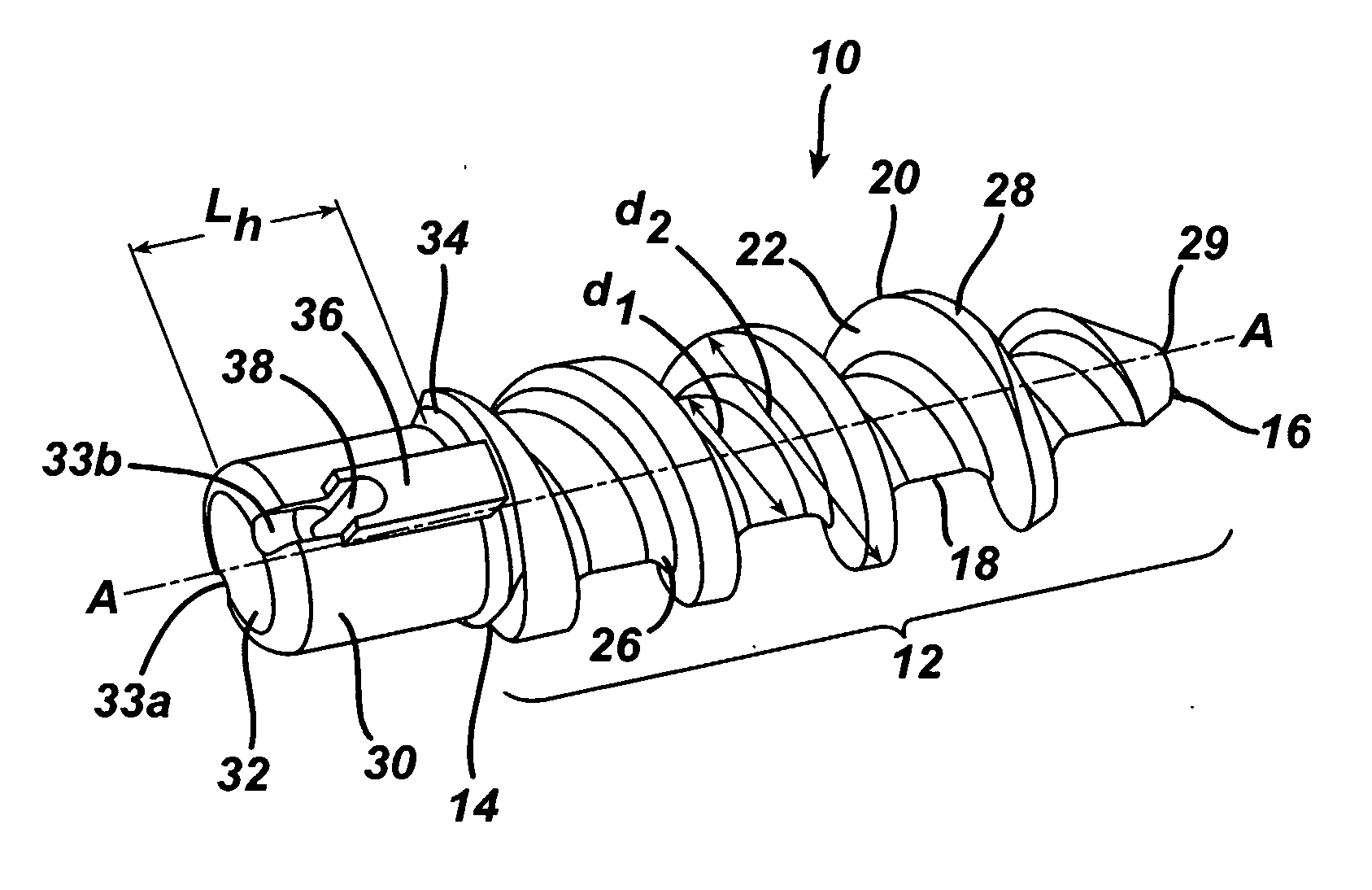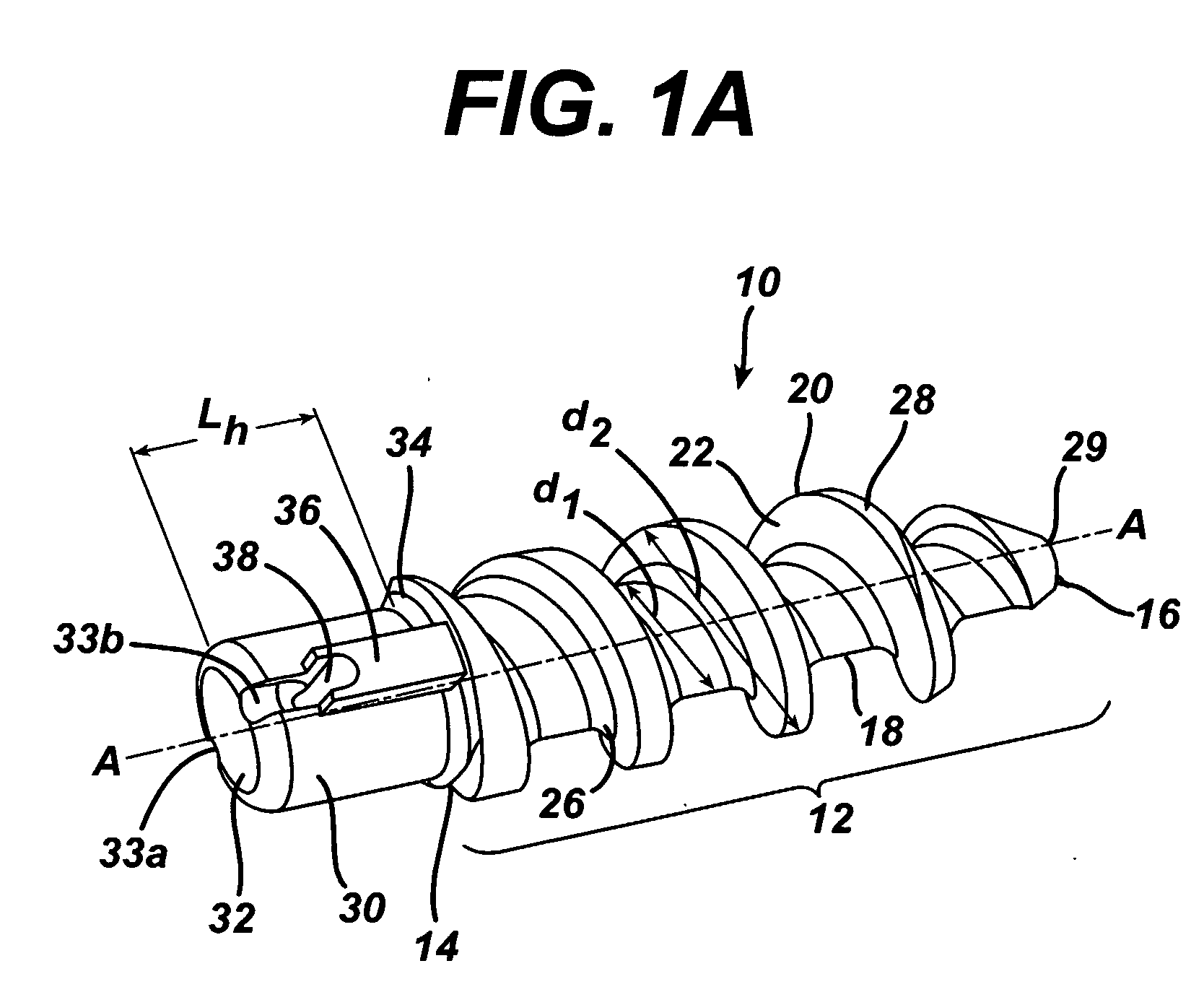Suture anchor with improved torsional drive head
a technology of torsional drive head and suture anchor, which is applied in the field of suture anchors, can solve the problems of permanent damage to the drive head, inability to achieve torque transfer, and inability to reduce the low stripping strength
- Summary
- Abstract
- Description
- Claims
- Application Information
AI Technical Summary
Problems solved by technology
Method used
Image
Examples
example 1
Insertion Torque to Failure Tests
[0053] Suture anchors with the drive head of the design in FIG. 7 consisting of two ARM's, each approximately 0.050″ in height and width, aligned in the plane of the suture eyelets, were subjected to insertion torque to failure tests versus a similar design without the two ARMs. Anchors were machined out of polysulfone.
[0054] Torque to failure tests were conducted in solid rigid polyurethane foam blocks (Sawbones, 1522-02, Pacific Research Laboratories, Inc., Vashon, Wash.). Torque measurements were recorded in inch-pounds using an Imada (Imada, Inc., Northbrook, Ill.) model DSD-4 Digitial Torque Tester / Screwdriver with mating ¼″ hexagonal drive Jacobs chuck attachment. The mean torque to failure of five anchors with ARMs was 7.0 in-lbs compared to 5.6 in-lbs for anchors designs without ARM's, representing a 25% increase in torque capacity of the drive head due to the present invention (ARM's) in polysulfone.
example 2
Insertion Torque to Failure Tests
[0055] Suture anchors with the drive head of the design in FIG. 6 consisting of two ARM's, each approximately 0.125″ in height and 0.050″ in width, aligned in the plane of the suture eyelets, were subjected to insertion torque to failure tests versus a similar design without the two ARMs and with the eyelets reversed, thus having the most distal eyelet traverse the long axis of the oval head while the proximal eyelet traverses the short axis of the oval head. Anchors were injection molded from a 30 / 70 by weight beta-TCP / (85 / 15 poly(lactide) / poly(glycolide) composite material (starting Inherent Viscosity of raw polymer approximately 3.0 dl / g measured in chloroform (CHCl3) using the Cannon Automated Viscometer).
[0056] Torque to failure tests were conducted in solid rigid polyurethane foam blocks (Sawbones, 1522-02, Pacific Research Laboratories, Inc., Vashon, Wash.) under approximately a 6-10 lb compressive load. Torque measurements were recorded in ...
PUM
 Login to View More
Login to View More Abstract
Description
Claims
Application Information
 Login to View More
Login to View More - R&D
- Intellectual Property
- Life Sciences
- Materials
- Tech Scout
- Unparalleled Data Quality
- Higher Quality Content
- 60% Fewer Hallucinations
Browse by: Latest US Patents, China's latest patents, Technical Efficacy Thesaurus, Application Domain, Technology Topic, Popular Technical Reports.
© 2025 PatSnap. All rights reserved.Legal|Privacy policy|Modern Slavery Act Transparency Statement|Sitemap|About US| Contact US: help@patsnap.com



